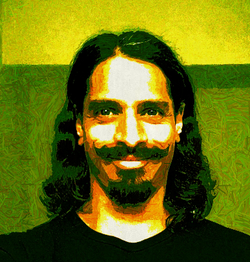The story revolves around the lives of 4 characters brought together by circumstance and their struggle for survival in a competitive Indian environment.
Mistry does an amazing job in character development and vivid story telling. He does this by engaging the reader in evocative sensory detail.
His 'fictional reality' told stories that left the reader smiling with empathy, and also a few that left a haunting doubt of the capacity of human cruelty. It shined a light on caste discrimination, government corruption in the mid 70's, and culture in general.
Overall it was a good read, but it felt as if the whole story built up to end in catastrophe. Castration, Amputation, Social Dependence, and Youth Suicide are among the fates of the characters.
The books namesake is derived from a conversation that takes place between two characters who discuss the key to life is understanding "a fine balance" of Hope and Despair so as to keep an even keel through life's turbulence.
No new truths are revealed, only stories of simple joys, strange environments, comedic tales, racial and political bullying, and the incredible power of attitude.
Attitude is how you feel about something. Since we can't turn off our feelings, we have to decide how we will process the situation. We can't really move forward until we choose our attitudes.
One of the reasons I enjoy reading about well developed characters is that it allows me to relate to them and their lives. I get to experience their reality, and feel their attitudes throughout the story. It helps me understand why we become the people we are, and sometimes it can foreshadow our fates.
While not exactly prognostication or divination, reading for me lends insight into human nature. I meet the characters from my books quite often in my own life-journey. I can appreciate the heroism, the villainy, and the comedic wheel that holds everything in balance.



 RSS Feed
RSS Feed
